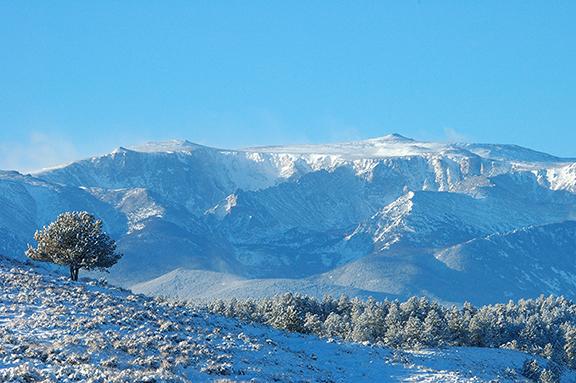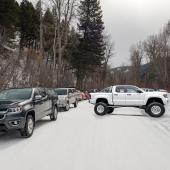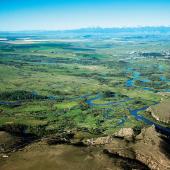A Master Plan
Forest Service revision begins.
Where do you go to recreate? Around here, chances are on the nearly 3.1 million acres of National Forest System Lands that make up the Custer Gallatin National Forest. Wilderness, world-class streams, running trails, mountain-biking opportunities, snowmobiling, skiing, fishing, motorsports, and much more are available to us through these public lands. Day after day, we utilize our public lands far more than we realize, making them essential to our well-being as individuals and as a community. This week, the Custer Gallatin National Forest is kicking off a four-year process called the Forest Plan Revision, the guiding foundational document for what we do on National Forest System lands.
As the vision for the forest for a decade or more, the Forest Plan Revision is an excellent opportunity to get involved and help shape public-lands management. National Forest System lands exist to sustain the health, diversity, and productivity of our forests and grasslands to meet the needs of present and future generations. As part of the process, the Forest Service will work with local governments, citizens, and community organizations in the areas we work and play in. The Forest Plan Revision process will have several opportunities for public involvement over the next four years. I encourage people to get involved early and often, starting with our opt-in option on our website. The first round of public meetings will be held between February 22 and March 10, with a Forest Plan Revision introduction and orientation. A second set of informational meetings coupled with some findings of our assessment of existing conditions is planned for June. Libraries in district communities each have a master copy of the Custer 1986 forest plan and the Gallatin 1987 forest plan (including Bozeman, West Yellowstone, Livingston, Gardiner, Big Timber, Red Lodge, Billings, Colstrip, and Ekalaka, MT and Buffalo, SD), along with the 2012 Forest Plan Directives, accessible to those interested. This information is also available online.
A project, your favorite trail, or a viewpoint may all be a direct connection to your back yard, but we encourage you to look at forest-plan revision as the same type of opportunity—to share local knowledge, current conditions, trends, perceptions, and concerns.
So what’s useful? Here are some examples.
- Trends of existing conditions, for example bird counts conducted in scientific manner
- Peer-reviewed studies and scientific assessments
- Expert opinion, panel consensus, inventories, or observational data
- Data prepared by other agencies
We all care about this land in one way or another and connect to it. Throughout the Forest Plan Revision, we will be looking to provide for ecological sustainability and contribute to social and economic sustainability, not one or the other. Specialists will evaluate trends and current conditions on 15 topics in the assessment phase which runs into summer. Those topics are listed here.
- Terrestrial and aquatic ecosystems and watersheds
- Air, soil, and water resources and quality
- System drivers and stressors
- Baseline assessment of carbon stocks
- Threatened, endangered, proposed, candidate, and potential species of conservation concern
- Social, cultural, and economic conditions
- Benefits people obtain from NFS planning area (ecosystem services)
- Multiple uses and their contributions to local, regional, and national economies
- Recreation settings, opportunities and access, and scenic character
- Renewable and nonrenewable energy and mineral resources
- Infrastructure, such as recreational facilities and transportation, and utility corridors
- Areas of tribal importance
- Cultural and historical resources and uses
- Land status and ownership, use, and access patterns
- Existing designated areas located in the plan area including wilderness and wild and scenic rivers and potential need and opportunity for additional designated areas
Choose to opt-in: join the conversation at #custergallatinfuture or by emailing [email protected] to tell us what you value about National Forest System lands.
Mariah Leuschen-Lonergan is a public affairs officer with the Custer Gallatin National Forest.














